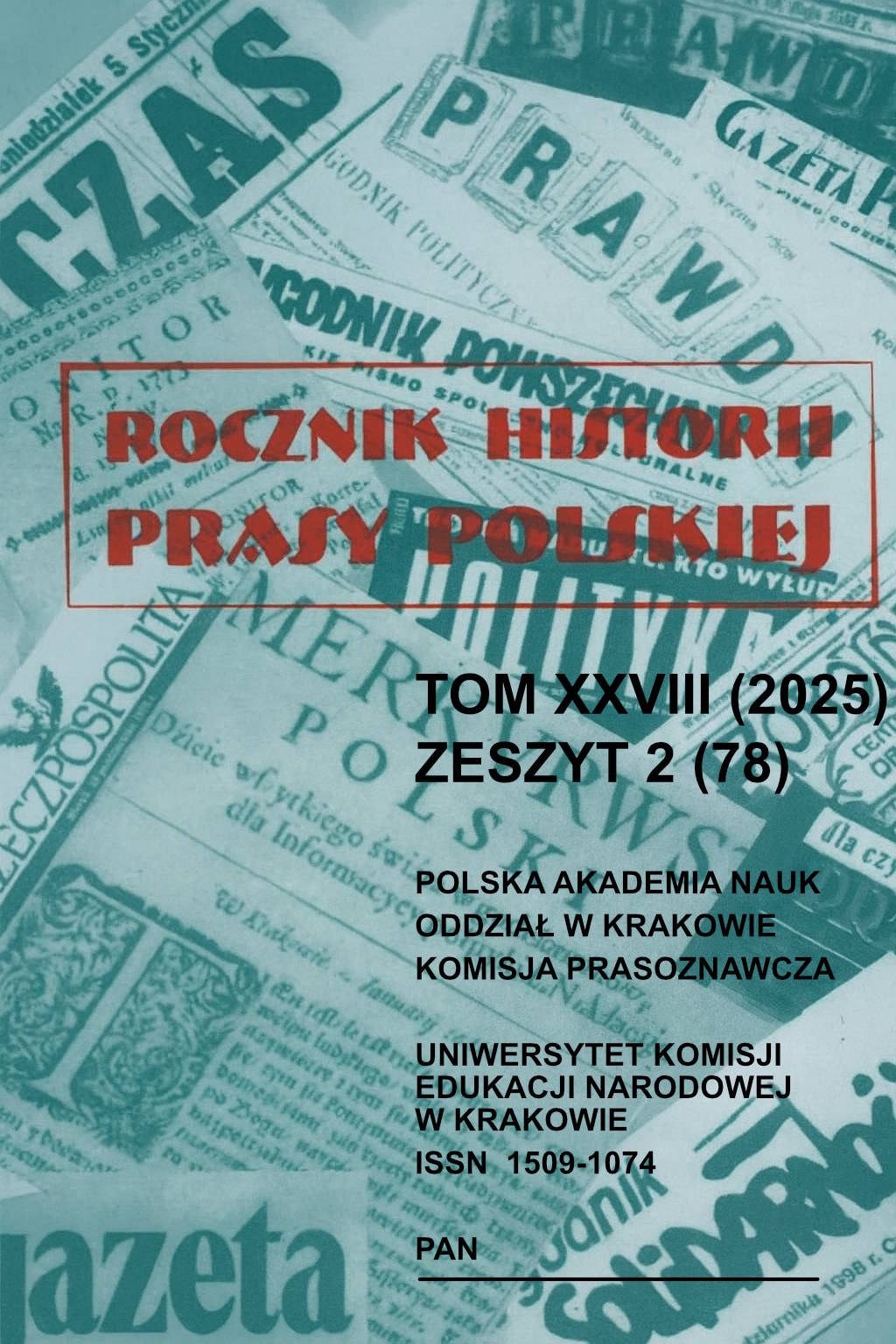Prasowe interpelacje poselskie w Sejmie Ustawodawczym (1919-1922): definicja, charakterystyka ilościowa, twórcy, adresat, typologia, funkcje
Słowa kluczowe:
prasa, dziennikarze, posłowie, interpelacje poselskie, Sejm Ustawodawczy, nadzór nad prasą, cenzura, konfiskaty, 1919–1939Abstrakt
Interpelacje poselskie jako narzędzia kontroli parlamentarnej stanowią cenne źródło w analizie procesów politycznych i społecznych, a także w kształtowaniu wizerunku określonej grupy posłów, zarówno na forum sejmowym, jak i wśród wyborców. Dla historyka prasy szczególne znaczenie mają prasowe interpelacje poselskie, które dokumentują relacje między polityką a prasą, ukazują mechanizmy nadzoru nad periodykami oraz strategie obronne redakcji wobec restrykcji w rozpowszechnianiu treści. Autorka definiuje je jako dokumenty dotyczące formalnych i treściowych aspektów funkcjonowania prasy, powstałe w reakcji na konkretne przypadki cenzury, konfiskat czy represji wobec dziennikarzy, prezentowane na forum sejmowym. Badania nad tym zjawiskiem wymagały zastosowania przede wszystkim analizy ilościowej i jakościowej, które pozwoliły wskazać zarówno prawne oraz regulaminowe podstawy interpelacji, jak i ich zawartość, sposób argumentacji, także oczekiwane rezultaty. W artykule poddano analizie formalnej 73 prasowe interpelacje poselski, uwzględniając ich charakterystykę ilościową, prezentując twórców, adresatów, strukturę, typologię oraz pełnione funkcje. W badaniach zastosowano również analizę jakościową, umożliwiającą szczegółowe opracowanie ich problematyki, a także wykorzystywanych przez posłów strategii językowych, zarówno w sposobie argumentowania przy uzasadnianiu konieczności wnoszenia interpelacji, jak i oczekiwanych rezultatów. Metoda historyczno-prawna została wykorzystana w ograniczonym zakresie, głównie do wskazania podstaw prawnych i regulacji parlamentarnych dotyczących procedury ich składania i rozpatrywania. Badania te wpisują się w kontekst funkcjonowania ludzi prasy oraz problematyki prasowej w Sejmie Ustawodawczym (1919–1922), którym autorka od kilku lat jest zainteresowana.
Bibliografia
Źródła
Sprawozdania Stenograficzne z Posiedzeń Sejmu Ustawodawczego (1919–1922); https://bs.sejm.gov.pl/F?func=scan&scan_code=NST&scan_start=rpii/0&local_base=2RP_SU_SJ_ST
Interpelacje
https://bs.sejm.gov.pl/F?func=scan&scan_code=TIP&scan_start=0&local_base=2RP_SU_-SJ_IP
Opracowania
Ciągwa J., Interpelacje poselskie w Sejmie Śląskim 1922–1939. Regulacja prawna i praktyka, Katowice 2016.
Kupis M., Ewolucja instytucji interpelacji poselskiej w polskim parlamentaryzmie, „Przegląd Prawa Konstytucyjnego” 2012, nr 1, s. 93–125.
Pietrzak M., Rządy parlamentarne w Polsce w latach 1919–1926, Warszawa 1969.
Wrona G., „Ludzie prasy” w poselskich ławach i debacie parlamentarnej w świetle „Sprawozdań Stenograficznych z Posiedzeń Sejmu Ustawodawczego” (1919–1922), „Rocznik Historii Prasy Polskiej” 2023, z. 4, s. 61–83.
Wrona G., Nadzór nad prasą w Krakowie (1918–1939), Kraków 2017.
Pobrania
Opublikowane
Jak cytować
Numer
Dział
Licencja
Prawa autorskie (c) 2025 Rocznik Historii Prasy Polskiej

Utwór dostępny jest na licencji Creative Commons Uznanie autorstwa 4.0 Międzynarodowe.

